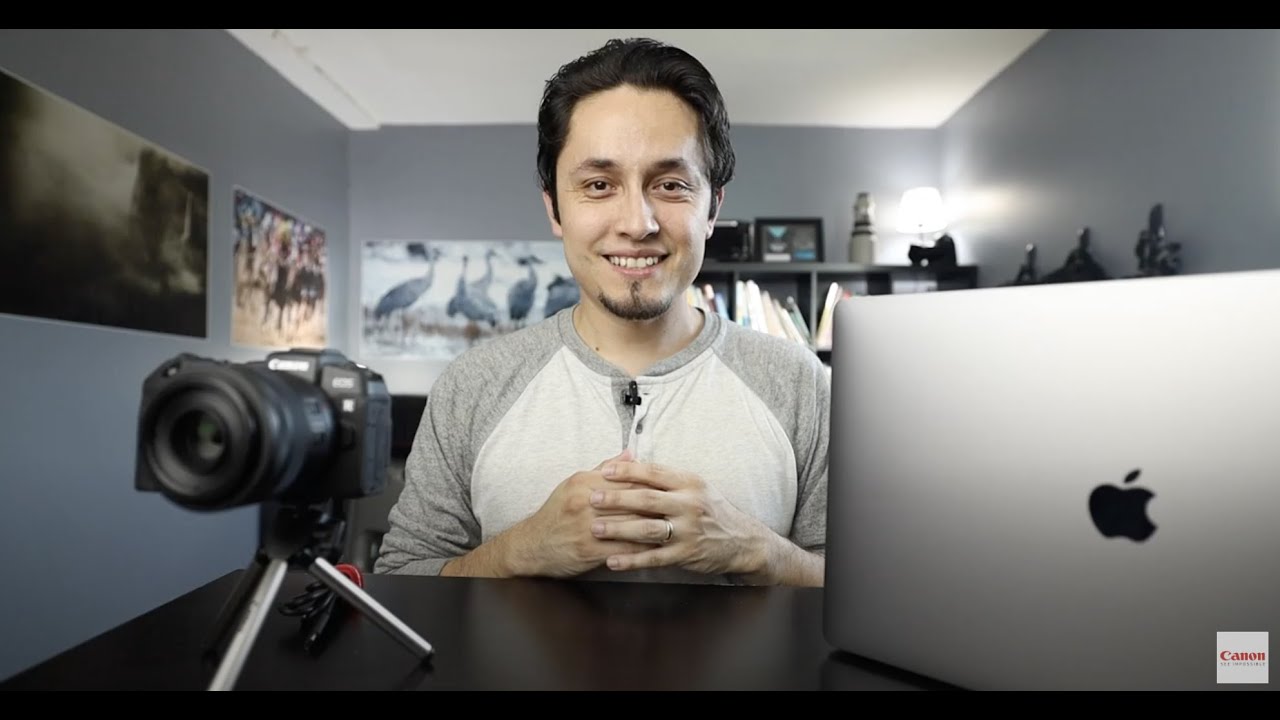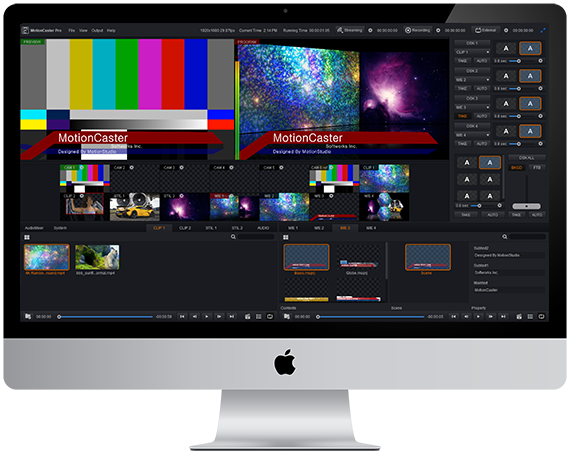I'm not sure You can. You can run the USB is macosx recovery, unibeast automatically makes your USB into a recovery macosx USB. However I have never tried to install.
- Use Apple Watch to unlock your Mac and approve requests. Make and receive phone calls on your Mac. Control accessories in your home. Send files between devices with AirDrop. Use AirPods with your Mac. Stream content to Apple TV. Music, TV, books, news, and more.
- “After trying several live streaming solutions, Livestream was clearly the best option for us. The simplicity of the Mac OS X Producer app allows our volunteers to run our stream with minimal training. We believe our plan is an exceptional value and offers just the right options.
- Set this to NFS when streaming from Mac OS X 10.7 (Lion). Network Address: This address can be in the form of an IP address or a DNS name. If you are streaming from a Mac or PC your computer name will work, so iBook G4 would be iBook-G4.local the computer name for the Mac is viewable in System Preferences Sharing.
- Live for Mac stands out as an excellent audio production and recording software that packs all the essential features you'd expect from an application of its. Free to try Ableton Mac OS X 10.10.
Use Shift-Command-5
If you're using macOS Mojave or later, press Shift-Command (⌘)-5 on your keyboard to see onscreen controls for recording the entire screen, recording a selected portion of the screen, or capturing a still image of your screen. You can also record the screen with QuickTime Player instead.
Record the entire screen
- Click in the onscreen controls. Your pointer changes to a camera .
- Click any screen to start recording that screen, or click Record in the onscreen controls.
- To stop recording, click in the menu bar. Or press Command-Control-Esc (Escape).
- Use the thumbnail to trim, share, save, or take other actions.
Record a selected portion of the screen

- Click in the onscreen controls.
- Drag to select an area of the screen to record. To move the entire selection, drag from within the selection.
- To start recording, click Record in the onscreen controls.
- To stop recording, click in the menu bar. Or press Command-Control-Esc (Escape).
- Use the thumbnail to trim, share, save, or take other actions.
Trim, share, and save
After you stop recording, a thumbnail of the video appears briefly in the lower-right corner of your screen.
- Take no action or swipe the thumbnail to the right and the recording is automatically saved.
- Click the thumbnail to open the recording. You can then click to trim the recording, or click to share it.
- Drag the thumbnail to move the recording to another location, such as to a document, an email, a Finder window, or the Trash.
- Control-click the thumbnail for more options. For example, you can change the save location, open the recording in an app, or delete the recording without saving it.
Change the settings
Click Options in the onscreen controls to change these settings:
- Save to: Choose where your recordings are automatically saved, such as Desktop, Documents, or Clipboard.
- Timer: Choose when to begin recording: immediately, 5 seconds, or 10 seconds after you click to record.
- Microphone: To record your voice or other audio along with your recording, choose a microphone.
- Show Floating Thumbnail: Choose whether to show the thumbnail.
- Remember Last Selection: Choose whether to default to the selections you made the last time you used this tool.
- Show Mouse Clicks: Choose whether to show a black circle around your pointer when you click in the recording.
Use QuickTime Player
- Open QuickTime Player from your Applications folder, then choose File > New Screen Recording from the menu bar. You will then see either the onscreen controls described above or the Screen Recording window described in the following steps.
- Before starting your recording, you can click the arrow next to to change the recording settings:
- To record your voice or other audio with the screen recording, choose a microphone. To monitor that audio during recording, adjust the volume slider (if you get audio feedback, lower the volume or use headphones with a microphone).
- To show a black circle around your pointer when you click, choose Show Mouse Clicks in Recording.
- To record your voice or other audio with the screen recording, choose a microphone. To monitor that audio during recording, adjust the volume slider (if you get audio feedback, lower the volume or use headphones with a microphone).
- To start recording, click and then take one of these actions:
- Click anywhere on the screen to begin recording the entire screen.
- Or drag to select an area to record, then click Start Recording within that area.
- To stop recording, click in the menu bar, or press Command-Control-Esc (Escape).
- After you stop recording, QuickTime Player automatically opens the recording. You can now play, edit, or share the recording.
Learn more

- When saving your recording automatically, your Mac uses the name ”Screen Recording date at time.mov”.
- To cancel making a recording, press the Esc key before clicking to record.
- You can open screen recordings with QuickTime Player, iMovie, and other apps that can edit or view videos.
- Some apps, such as DVD Player, might not let you record their windows.
- Learn how to record the screen on your iPhone, iPad, or iPod touch.
Mac Os X Download
Hey everyone!
I've come across an interesting situation. I recently borrowed a laptop for work purposes, but decided to try out a Windows-specific game that I've always wanted to play - GoldenEye: Source. ;) It works beautifully and I thought about streaming it on Twitch, but the laptop is old'ish and not reliable for streaming.
This brings me to my Mac, which is perfectly capable of streaming without any hiccups. Would there be any way at all to pick up the PC source on OBS for Mac? So far, I've tried:
1) HDMI connection from PC to Minidisplay Port on Mac (no connection there).
2) HDMI connection from PC to Elgato IN with USB connection to Mac (Elgato picks up the screen, but there is no game audio).
3) HDMI connection from PC to Elgato IN with UBS connection to Mac AND HDMI out to TV (once again, no audio pick up).
4) HDMI connection from PC to TV, but I'm then stranded in terms of getting it back to Mac (works great on TV with audio as well).
I know that this might be uncharted territory (or maybe not!). In any case, any tips or advice would be greatly appreciated in terms of what the best setup (if any) exists for these two systems to exist and help one another out with the PC being the gaming computer and Mac being the streaming computer.
Thanks in advance!
Nicholas
I've come across an interesting situation. I recently borrowed a laptop for work purposes, but decided to try out a Windows-specific game that I've always wanted to play - GoldenEye: Source. ;) It works beautifully and I thought about streaming it on Twitch, but the laptop is old'ish and not reliable for streaming.
This brings me to my Mac, which is perfectly capable of streaming without any hiccups. Would there be any way at all to pick up the PC source on OBS for Mac? So far, I've tried:
1) HDMI connection from PC to Minidisplay Port on Mac (no connection there).
2) HDMI connection from PC to Elgato IN with USB connection to Mac (Elgato picks up the screen, but there is no game audio).
3) HDMI connection from PC to Elgato IN with UBS connection to Mac AND HDMI out to TV (once again, no audio pick up).
4) HDMI connection from PC to TV, but I'm then stranded in terms of getting it back to Mac (works great on TV with audio as well).
I know that this might be uncharted territory (or maybe not!). In any case, any tips or advice would be greatly appreciated in terms of what the best setup (if any) exists for these two systems to exist and help one another out with the PC being the gaming computer and Mac being the streaming computer.
Thanks in advance!
Nicholas
